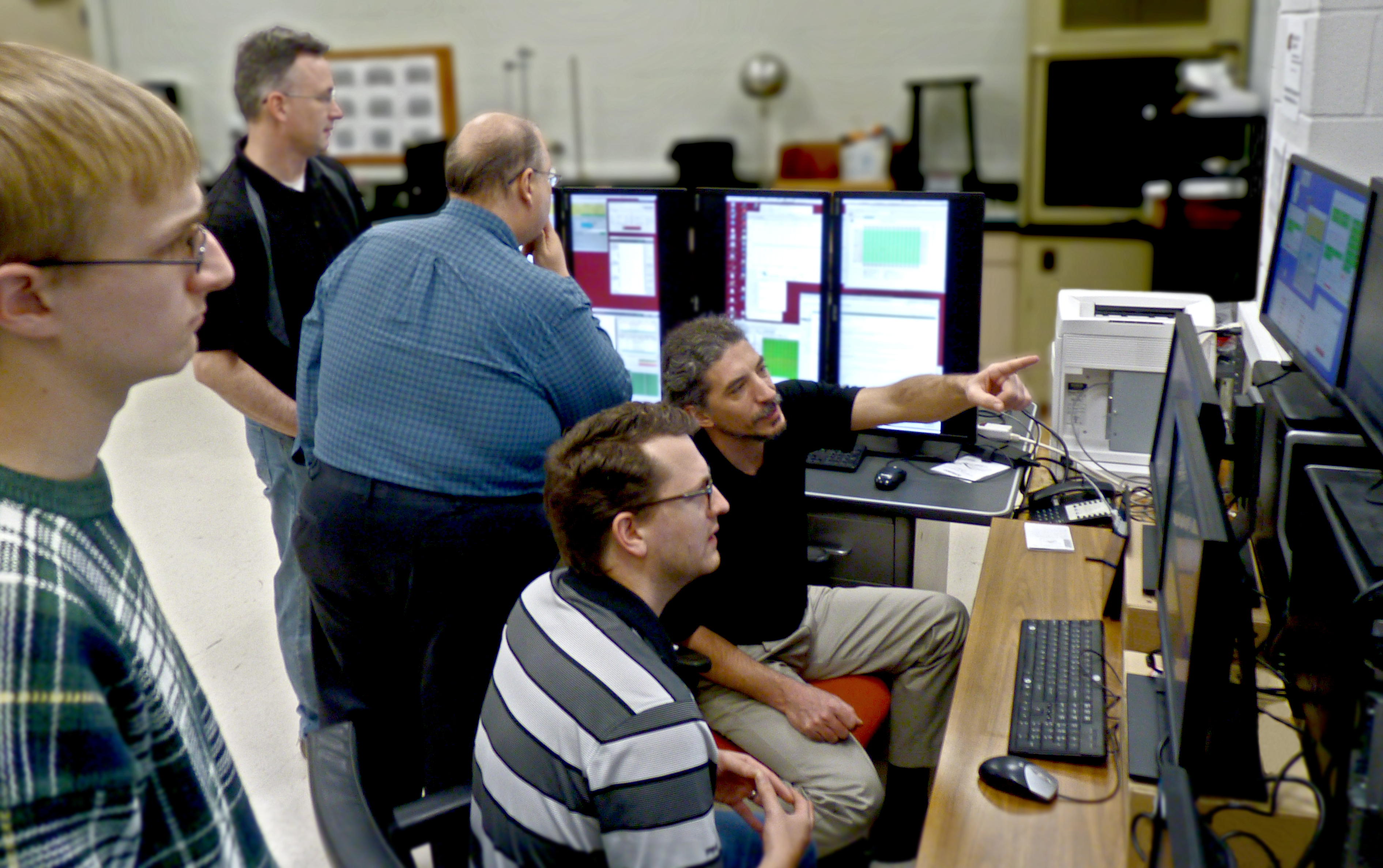Scientists on the Fermilab NOvA research project, including particle physicists from Wichita State University, saw their first evidence of oscillating neutrinos, confirming that the detector built for the project not only functions as planned, but is making great progress toward a major leap in our understanding of these ghostly particles.
NOvA, which stands for “NuMI Off-Axis Electron Neutrino Appearance,” is on a quest to learn more about the abundant yet mysterious particles called neutrinos, which flit through ordinary matter as though it weren’t there. The first NOvA results, released this week at the American Physical Society’s Division of Particles and Fields conference in Ann Arbor, Michigan, verify that the experiment’s massive particle detector -- 50 feet tall, 50 feet wide and 200 feet long -- is able to detect neutrinos fired from 500 miles away. Scientists have sorted through millions of cosmic ray strikes and zeroed in on neutrino interactions.
“People are ecstatic to see our first observation of neutrino oscillations,” said NOvA co-spokesman Peter Shanahan of the U.S. Department of Energy’s Fermi National Accelerator Laboratory. “For all the people who worked over the course of a decade on the designing, building, commissioning and operating this experiment, it’s beyond gratifying.”
Researchers have collected data aggressively since February 2014, recording neutrino interactions in the 14,000-ton far detector in Ash River, Minnesota, even while construction was still underway. Professors Nickolas Solomey, Holger Meyer and Mathew Muether, from WSU’s Department of Mathematics, Statistics and Physics, have been remotely monitoring data from a dedicated control center in Jabara Hall between trips to Fermilab facilities in Batavia, Illinois, near Chicago. WSU students have also been involved in the on-campus research.
The neutrino beam generated at Fermilab passes through an underground “near detector,” which measures the beam’s neutrino composition before it leaves the Fermilab site. The particles then travel more than 500 miles straight through the earth, oscillating (or changing types) along the way. About once per second, Fermilab’s accelerator sends trillions of neutrinos to Minnesota, but the elusive neutrinos interact so rarely that only a few will register at the far detector.
When a neutrino bumps into an atom in the NOvA far detector, it releases a signature trail of particles and light depending on which type it is: an electron, muon or tau neutrino. The beam originating at Fermilab is made almost entirely of one type – muon neutrinos – and scientists can measure how many of those muon neutrinos disappear during their journey and reappear as electron or tau neutrinos.
If oscillations did not occur, experimenters predicted they would see 201 muon neutrinos arrive at the NOvA far detector in the data collected; instead, they saw only 33, proving that the muon neutrinos were transforming into the two other types.


 Wichita State, Wichita State University
Wichita State, Wichita State University